一、系统设计原则及组成
A biological process is the process in which a biological system undergoes biochemical reactions in a bioreactor. The bioreactor system and its surrounding environment form a relatively closed ecosystem. In this ecosystem, there are interactions between biological systems and environmental factors.
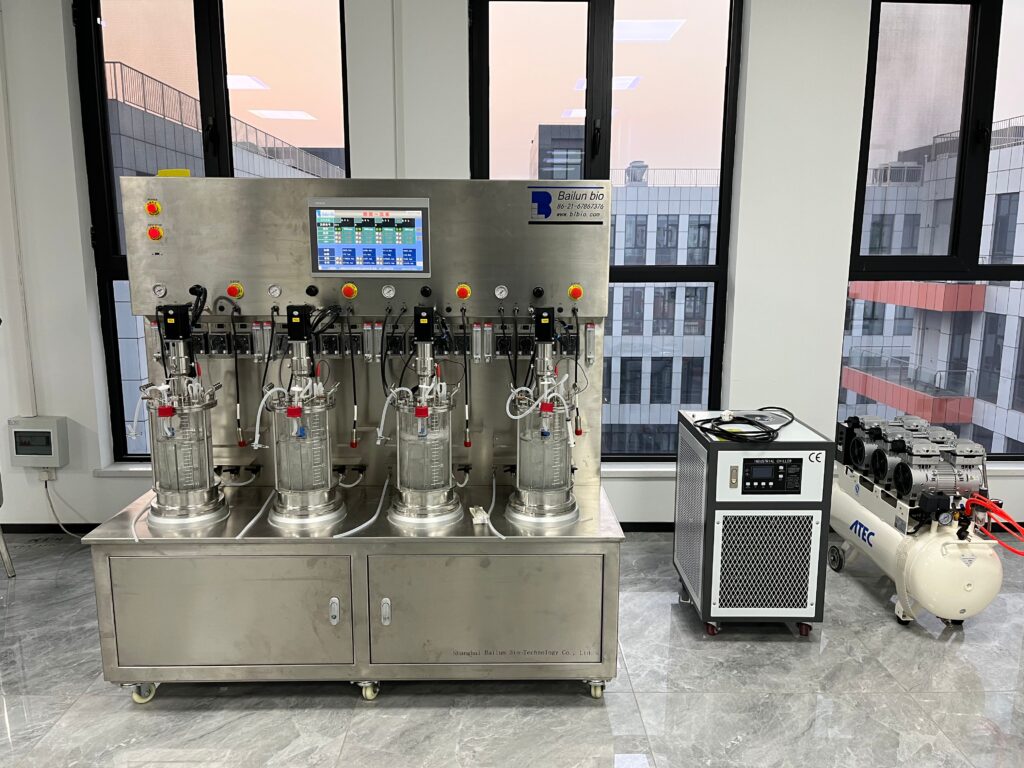
The phenotype of biological systems, especially those dominated by cells, is closely related not only to genotype, but also to the micro or macro environmental conditions in which the cells are located (such as nutrient types, pH, temperature, dissolved oxygen, mixing and transfer characteristics of bioreactors, etc.). In other words, genotype and environment jointly determine the phenotypic characteristics of biological systems. On the other hand, biological processes have highly nonlinear and time-varying characteristics, making it difficult to characterize their complex ontological features using macroscopic dynamics aimed at detecting and controlling environmental operating parameters.
Therefore, it is necessary to systematically analyze the metabolic changes of cells based on the metabolic characteristics related to parameters during the fermentation process, emphasizing that the physiological state of cells is related to parameters and is the result of the transfer, conversion, and balance of materials, energy, or information in bioreactors. Although its micro influencing factors may only occur at a certain scale at the level of genes, enzymes, cells, or reactors, they will ultimately be reflected in macro processes, providing clues for studying data correlation analysis methods at different scales in bioreactors.
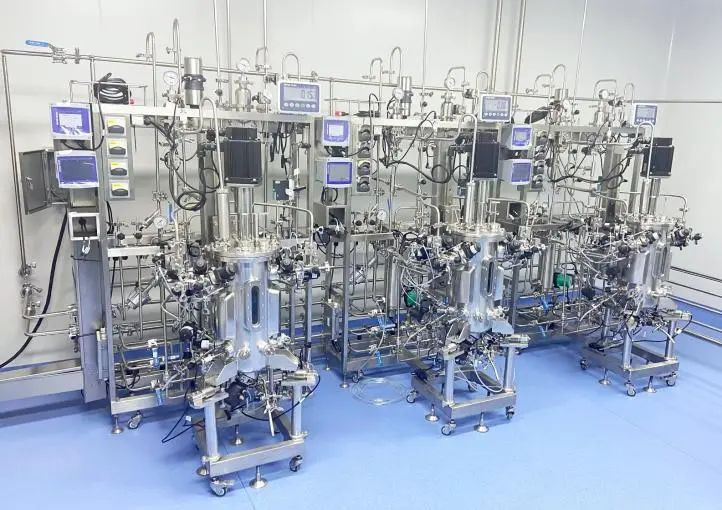
An ideal bioreactor system should detect and analyze operating parameters and state parameters at different scales as much as possible, so as to potentially construct an optimized external environment that maximizes the gene expression and metabolic regulation of microorganisms for the biosynthesis of a certain target product and maximizes the accumulation of the target product.
The above indicates the engineering science issues of biological processes, which have evolved from macroscopic dynamics research to multi-scale theoretical methods based on biological process information processing, in order to guide the development of engineering technologies related to biological processes with bioreactor system as the core.
Bailun adopts a metabolic flow multi-scale biological reaction system, which includes various advanced sensors for the detection of cell physiological metabolic characteristics, sensor reactors and control systems for micro metabolic flow analysis of biological processes, computer software packages for the correlation analysis of cell physiological metabolic parameters, and computer Internet systems for data processing and remote analysis of fermentation processes.
This system is consistent with the highest configuration in Europe, reducing the interference of human factors on scientific research, improving data repeatability and accuracy, reducing labor and material costs, without the need for dedicated personnel on duty, and can achieve computer remote control and wireless monitoring.
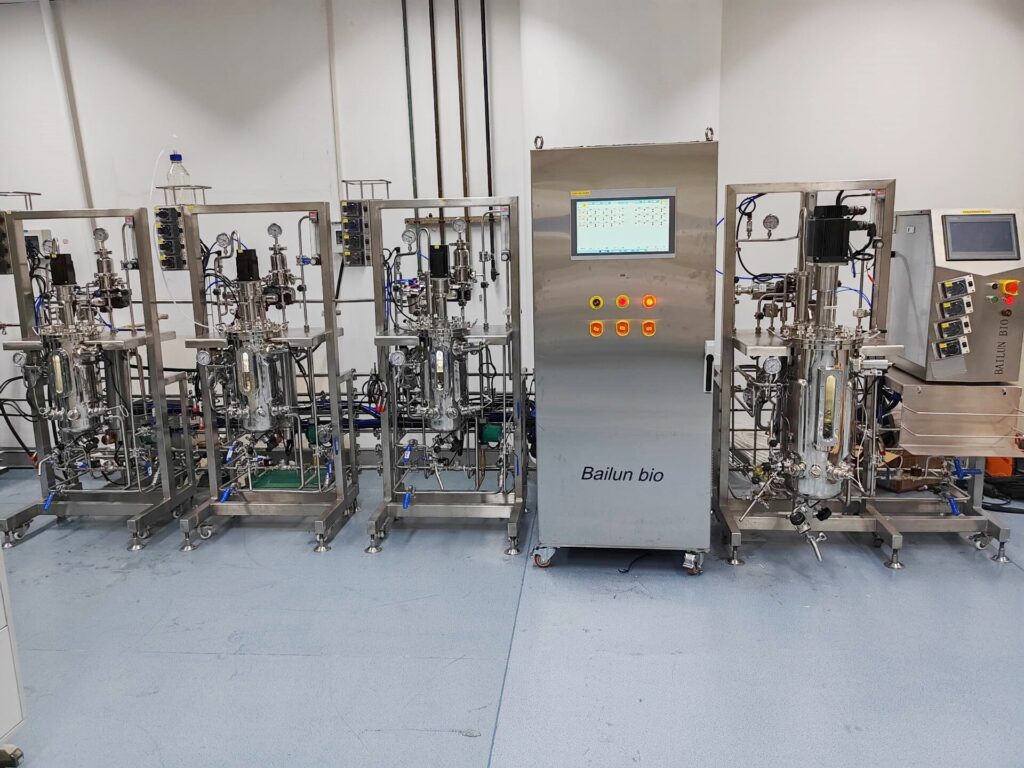
The can lid automatic opening system, and all parameters can be automatically controlled. Being able to obtain as much biological information as possible at various scales of the biological processing process, and then based on the principle of multi-scale parameter correlation, through real-time data processing of computer software, identifying key parameters for process optimization based on parameter correlation characteristics in massive data, and using them to guide process operations, equipment design, or strain screening and transformation, ultimately achieving process optimization and scaling up.
The system has been successfully applied to optimize the production process of various products, greatly improving the capacity of fermentation units. Its optimized process can generally be directly scaled up from tens of liters of fermentation tanks to industrial production fermentation tanks of hundreds of cubic meters.
2.先进在线仪器的开发与应用
(1)在线传感器 生物反应器系统
The bioreactor system with metabolic flow analysis as its core is equipped with advanced sensing systems. In addition to conventional detection and control parameters such as pH, temperature, stirring speed, dissolved oxygen, and rotor flow meter, a thermal mass flow meter (for precise measurement and control of intake flow rate to ensure it is not affected by intake pressure), a fermentation broth weighing system, exhaust gas oxygen and CO2 measuring instruments (exhaust gas composition analyzer or process exhaust gas mass spectrometer), and a top mounted silicone oil pressure sensor are also configured to accurately measure the oxygen consumption rate (OUR) and CO2 release rate (CER) of biological processes.
Micro metabolic flow analysis sensor reactors and control systems, in situ live cell concentration online measuring instruments, cell morphology online microscopic observation instruments, and other online sensors can also be configured as needed. Based on the direct parameters obtained from the measurement, important physiological and metabolic state parameters such as CER, OUR, and RQ can be calculated using computer software packages for cell physiological and metabolic parameter analysis.
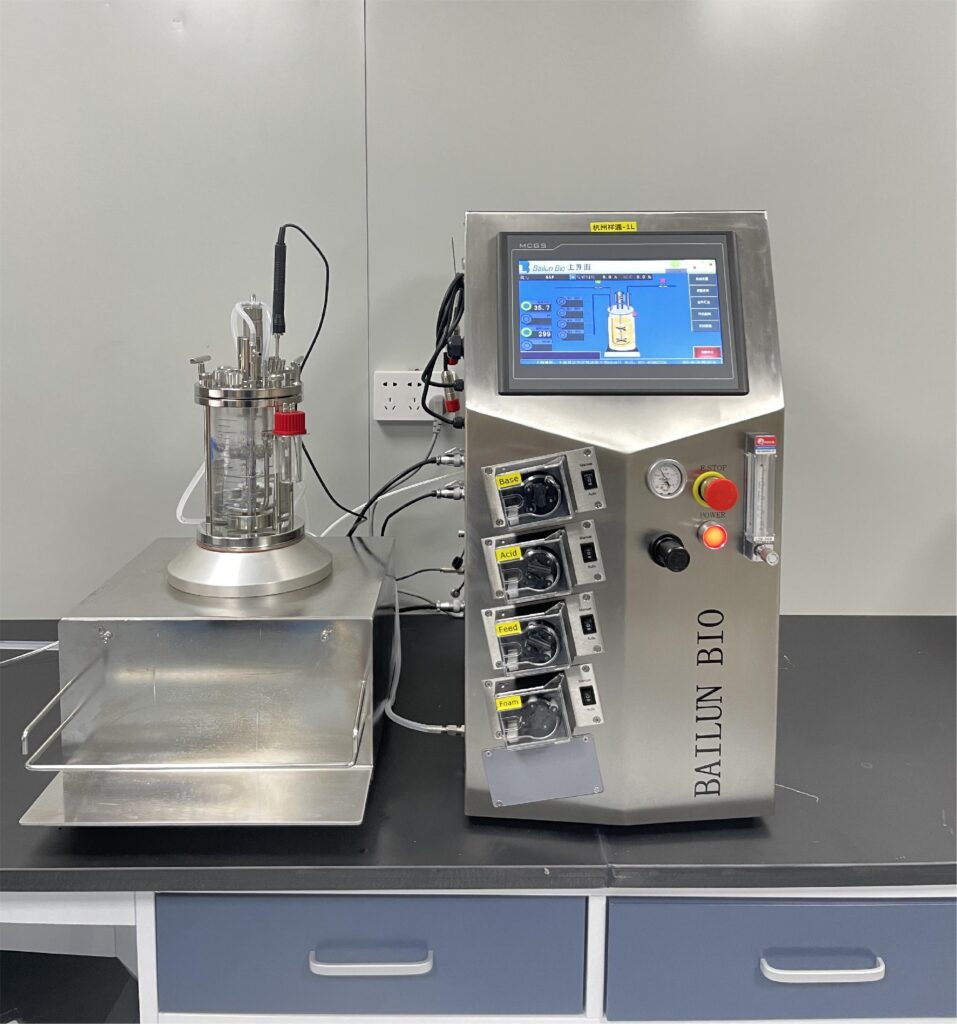
![]()
![]()
(2)汽车尾气质谱仪 生物反应器系统
The process exhaust gas mass spectrometer is mainly used for measuring the concentrations of O2, CO2, and N2 in exhaust gas. This mass spectrometer uses an electron bombardment ion source. After online pretreatment, the exhaust gases from different fermentation tanks are continuously input into the ionization chamber through a multi-channel rotary valve to form ions.
Using the motion law of charged particles in the electric field, the quadrupole mass analyzer separates the ions generated by the ion source according to their mass to charge ratio (mass to charge ratio, m/z), measures the distribution of ion mass intensity, and obtains information on compound types and concentrations, accurately reflecting changes in the composition of fermentation exhaust gases.
The measurement results can be input into a specialized software package designed for the fermentation process, enabling correlation analysis with other fermentation parameters. The exhaust gas mass spectrometer can measure volatile gas components with a relative molecular weight of up to 300, so it can also detect small molecule substances such as ethanol and methanol according to fermentation needs.
(3)测量分析仪 的 生物反应器系统
Biomass is an important parameter in the fermentation process. At present, it is usually obtained through offline measurements using classic methods such as dry mass and turbidity. The in-situ live cell concentration online analyzer can not only perform real-time online measurement, but also obtain more biologically meaningful live cell concentrations.
This is particularly suitable for fermentation processes that contain insoluble solid substances in the culture medium. The principle of the live cell analyzer is based on 0 In an alternating electric field with a frequency range of 1-10MHz, non-conductive polarization occurs on the cell surface such as the cell membrane in the fermentation broth, making living cells with intact cytoplasmic membranes essentially like capacitors (the non-conductive nature of lipid cytoplasmic membranes generally leads to charge growth), while dead cells, lysed cells, cell fragments, bubbles, and other matrix components are essentially non polarizable.
By applying an alternating electric field within the frequency range using dual electrodes, the measured capacitance between the electrodes depends on the cell type and size, and is proportional to the concentration of viable bacteria within a certain range. The in situ live cell concentration online analyzer is applicable to various animal and plant cells, yeast, bacteria, algae, etc. But it is not suitable for fermentation processes that require acid-base neutralizing agents as the target product, as excessive ion strength in the fermentation broth can interfere with the accurate measurement of capacitance.
微型生物反应器
The micro bioreactor system is a novel biochemical experimental platform that enables the study and control of biological reactions in small-scale reactors. This system combines the advantages of microfluidic technology, microelectronic devices, and biotechnology to perform the functions of traditional bioreactors at the microscale. Micro bioreactor systems typically consist of microfluidic chips, micro pumps, temperature control, and control systems. Microfluidic chips are core components composed of microchannels and microvalves, used to regulate the flow and mixing of microorganisms and substrates in reactors.
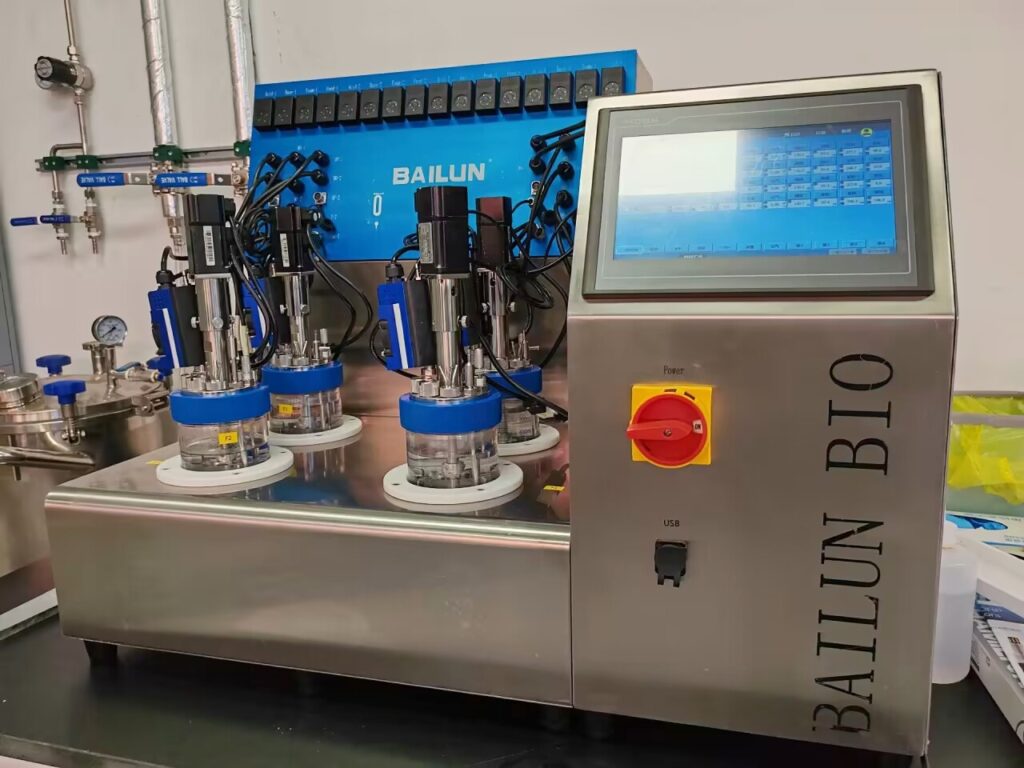
The micro pump is responsible for providing fluid pumping and controlling flow rate, the temperature control system is used to maintain a constant temperature inside the reactor, and the control system is used to monitor and regulate the progress of the reaction in real time. The micro bioreactor system has many advantages. Firstly, due to the small size of the reactor, it can reduce reaction time and substrate consumption, thereby improving reaction efficiency. Secondly, microfluidic chips can achieve precise control of reaction parameters such as temperature, pH value, and substrate concentration, making experimental results more accurate and reliable.
In addition, due to the small size of the reactor, multiple reactors can be run in parallel on the same experimental platform for high-throughput experiments, accelerating the progress of scientific research. Micro bioreactor systems have broad application prospects in fields such as biomedical, biopharmaceutical, environmental protection, and food industry. Through the application of micro bioreactor systems, researchers can delve deeper into the physiological characteristics of microorganisms, accelerate the development of new drugs, improve the efficiency of biological production processes, and develop new treatment methods and environmental monitoring methods.
微 生物反应器系统 通常由以下主要部分组成:
(1)微流控芯片 生物反应器系统: 微流控芯片是微型生物反应器系统的核心部件,由微米级通道网络和微阀门组成,通过调节微阀门的开闭,可以控制微通道内流体的流动和混合,实现对反应条件的精确控制。微流控芯片通常由玻璃、聚合物或硅基材料制成。
(2)微型泵 的 生物反应器系统: 微泵是一种用于提供流体泵送的装置,微泵通常采用压力或电动方式驱动,可实现对流体的精确控制,可将底物、培养基、试剂等送入微流控芯片,控制反应器内的流速和流体混合程度。
(3)温度控制系统 的 生物反应器系统: 温控系统用于维持反应器内部温度的恒定,通过加热元件和传感器可以实现对反应器温度的精确控制。温度对于微生物的生长和代谢至关重要,因此温控系统的稳定性对于实验结果的准确性至关重要。
(4)控制系统 的 生物反应器系统: 控制系统通常由硬件和软件组成,用于实时监控和调节微型生物反应器系统的运行。它可以监控温度、流速、压力等参数,并根据预先设定的反应条件自动调节这些参数。控制系统还可以记录实验过程中的数据,并进行数据分析和处理。
In addition to the main components mentioned above, the micro bioreactor system may also include additional components such as sensors, detection instruments, and data storage devices. Sensors can monitor indicators such as biological activity, substrate concentration, and product generation in the reactor. Detection instruments are used to analyze and measure the quality and quality of the reaction process, while data storage devices are used to store experimental data and results.
The micro bioreactor system achieves precise control and efficient experimentation of microbial reaction processes through the combination of microfluidic chips and related equipment. This system has broad application potential in fields such as life sciences, drug development, and industrial production.
微型 生物反应器系统 具有以下优点:
(1)体积小: 微型生物反应器系统的尺寸较小,一般为微米至毫米级。与传统生物反应器系统相比,微反应器体积更小,节省实验室空间,并可在相对较小的设备中同时运行多个反应器。这种小尺寸的设计还可以减少样品和试剂的使用量,降低实验成本。
(2)反应速度快: 微反应器由于体积小,反应体积更小,使反应物在通道内能够更快地进行混合和扩散,从而提高反应效率,加快反应速度,因此微型生物反应器系统可以缩短反应时间,加速实验进程,提高实验效率。
(3)样品和试剂消耗量低: 微型生物反应器系统中反应器的体积相对较小,所需的样品和试剂量也相应减少,不仅节省了昂贵的样品和试剂成本,而且有利于节约研究中稀缺的生物样品和贵重试剂。
(4)参数的精确控制: 微流控芯片在微型生物反应器系统中起着至关重要的作用,通过对微通道和微阀的控制,可以实现对反应物流量、温度、压力、混合等参数的精确控制,这种精确的控制可以使实验结果更加准确可靠,为优化生物反应条件提供更多的可能性。
(5)高通量实验: 微型生物反应器系统可以实现多个反应器的并行运行,即高通量实验。在同一个实验平台上,可以同时测试多种实验条件,大大提高研究人员的工作效率和实验产出。高通量实验在药物筛选、基因表达分析等研究中具有重要的应用价值。
(6)集成和自动化: 微型生物反应器系统可与其他设备、仪器集成,实现自动化操作,通过与温控系统、液体处理系统、检测仪器等连接配合,实现反应过程控制和数据处理的全自动化,提高实验的重复性和稳定性。
(7)微观 生物反应器系统 具有以下优点 体积小、反应速度快、样品和试剂消耗少、参数控制精确、实验通量高、自动化程度高,这些优点使其成为生物技术、生命科学、药物研究和生产等领域广泛应用的重要工具。
微 生物反应器系统 在很多领域都有着广泛的应用,下面列举一些重要的应用领域:
(1) 药物筛选与开发: 微型生物反应器系统广泛应用于药物筛选和开发过程中,通过在微流控芯片中培养细胞,可以评估药物的毒性和疗效。微反应器体积小、通量高的特点使得同时测试多个药物样本成为可能,大大加快了药物筛选的速度。此外,微型生物反应器系统可以模拟体内药物代谢和药物作用,提供更准确的药物疗效评估和剂量优化。
(2) 生物制药: 微型生物反应器系统在生物制药过程中发挥着重要作用,通过在微流控芯片中培育细胞工厂,可以实现生物药物的高效生产和纯化,微反应器精确的温度和流体控制能力可以优化生物反应条件,提高生产效率和产出质量,降低生产成本。
(3) 微生物研究: 微型生物反应器系统在微生物研究中有着广泛的应用,在微流控芯片上可以模拟和分析微生物的生理特性和代谢途径,揭示微生物的基本生物学过程。通过精确控制温度、pH值、氧气浓度等不同因素的影响,可以研究微生物对不同环境条件的响应和适应机制,加深对微生物生态学、代谢途径、进化机制等的认识。
(4) 环境监测: 微型生物反应器系统可用于环境监测和污染物检测。通过微流控芯片,可以培养特定的微生物菌株来检测环境中的有毒物质、重金属和污染物。微反应器对微生物活动的灵敏度和快速反应速度使其成为高效、准确、实时的环境监测工具。
(5) 生命科学研究: 微型生物反应器系统在生命科学研究中也得到了广泛的应用。研究人员可以利用微型生物反应器系统研究细胞信号传导、基因表达、蛋白质合成、代谢途径等生物过程。通过精确控制反应条件,我们可以更好地了解生物分子之间的相互作用、细胞功能以及疾病发展的机制。
微型生物反应器系统的应用涉及药物筛选、生物制药、微生物研究、环境监测、生命科学研究等领域,其高通量、精确控制、快速响应的特点为研究人员提供了高效、可靠、创新的实验平台。
